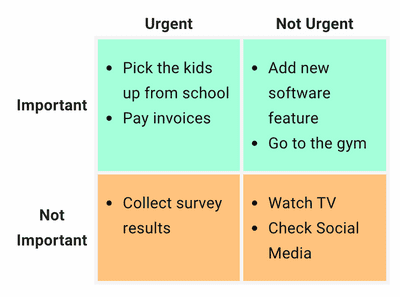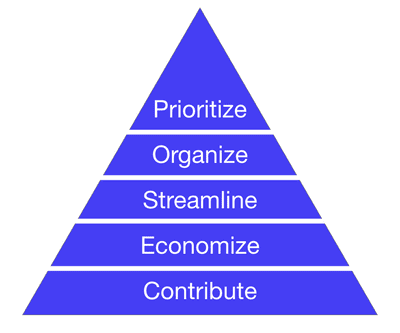
5 Effective Time Management Strategies to Boost Productivity
Does the looming challenge of managing your time effectively give you pause? Using time effectively is key to reaching goals. If you're the type that likes to follow battle-tested strategies, then there is some good news. You can plan and use time effectively using several available time management strategies.
Even though the thought may cross your mind that time management is limited to business, it isn't. It's important to include your personal life into this balance as well. We don't all have the same hurdles, and we've all got different cultures, so find methods that work for you. Often times in America, we try to reduce the amount of social time during work hours. Southern European countries have a culture where social interaction is rated as highly important. So there is no obvious line on what a priority should be.
Are you trying to get organized, use your time without interruption, work towards a prize, or correct some bad habits? There are various techniques to choose from.
Let's take a look at five strategies. Some of these can be combined to be most effective.
ABCD Analysis
The ABCD Analysis involves categorizing tasks into four different groups. The criteria is:
- A – Tasks that are perceived as being urgent and important,
- B – Tasks that are important but not urgent,
- C – Tasks that are unimportant but urgent,
- D – Tasks that are unimportant and not urgent.
Within these groups, you can rank tasks in order based on priority. Ideally, you'll only be working on groups ABC. To further reduce the number of groups, you may attempt to move group B tasks to A or C. At this point, you can clearly work on group A, then group C.

Pareto Analysis
The Pareto Analysis is a "low hanging fruit" strategy. The idea is that you can get 80% of your tasks done in 20% of the time. And the other 20% of tasks will take 80% of your time. To be most productive, prioritize the former tasks.
Often times the landscape changes, and your to-do list gets new priorities. Once you've done the first 80%, you can reevaluate your current task list. Depending on the type of task, the 80% may have solved enough of your problem. The original, slower 20% might not even be a priority anymore.

The Eisenhower Method
The Eisenhower Method (or Eisenhower Box) also involves grouping tasks based on importance and urgency. Dwight Eisenhower once quoted his "former college president":
I have two kinds of problems, the urgent and the important. The urgent are not important, and the important are never urgent.
This quote implies that importance and urgency are mutually exclusive. Although the strategy is inspired from the quote, it is actually a matrix of the two:

Write your day's priorities in the matrix. Anything that's important, you're going to work on yourself. If it's urgent, but not important, delegate it. Then try to eliminate the remaining tasks. These non-urgent, non-important tasks might include items such as watching TV or checking social media.
POSEC Method
The POSEC Method is short for "Prioritize by Organizing, Streamlining, Economizing and Contributing". First, evaluate your own immediate and personal hierarchy of needs. Once you've done that, you'll be better suited to collaborate on joint efforts.
Expanding upon the acronym:
- Prioritize – Your time and define your life by goals.
- Organize – Things you have to accomplish regularly to be successful (family and finances).
- Streamline – Things you may not like to do, but must do (work and chores).
- Economize – Things you should do or may even like to do, but they're not pressingly urgent (pastimes and socializing).
- Contribute – By paying attention to the few remaining things that make a difference (social obligations).
Overall, the goal is to increase your personal productivity. Break large tasks into smaller ones, and you'll have an easier time keeping momentum. In this way, you'll be regularly reaching goals. Beyond that, this strategy encourages personal growth first.

Pomodoro Technique
The Pomodoro Technique is based around a tomato timer you'd find in the kitchen. By working on tasks in 25 minute intervals, you'll be able to easily evaluate progress. The goal is to remain focused on individual tasks, eliminating interruptions.
These 25 minute intervals should not be interrupted. But if they are, record the task as either complete or postponed. After each pomodoro interval, mark the interval complete and take a 5 minute break. After four pomodoros, take a longer 15 minute break, and start over. You can use a timesheet app or an online tomato timer instead of running out to the grocery store.
When marking each interval complete, this gives you a sense of how much effort was put into a task. Additionally, it provides a sense of accomplishment. And when you know how much effort was spent on each task, you can improve future productivity.

Using various time management strategies, you'll be able to improve your productivity. Don't limit these techniques to just one. They often work well together. For example, the ABCD Analysis is regularly paired with the Pareto Analysis. Now you're efficiently reaching your goals with a greater sense of accomplishment! View our resource, Time Management 101, to learn even more about boosting your productivity.